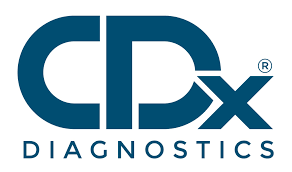CDx Diagnostics: New Research Shows Progression to Esophageal Cancer as Detected by WATS3D
 CDx Diagnostics: New Research Shows Progression to Esophageal Cancer as Detected by WATS3D
CDx Diagnostics: New Research Shows Progression to Esophageal Cancer as Detected by WATS3D
SUFFERN, NY (February 22, 2022) — A newly published study as lead article in Gastrointestinal Endoscopy shows that Barrett’s esophagus (BE) and dysplasia progress to esophageal cancer at similar, or even higher, rates when diagnosed by WATS3D (wide-area transepithelial sampling with three-dimensional analysis) as they do when diagnosed by conventional forceps biopsies.
This study titled “Progression of Barrett’s esophagus, crypt dysplasia, and low-grade dysplasia diagnosed by wide-area transepithelial sampling with 3-dimensional computer-assisted analysis: a retrospective analysis,” was authored by Nicholas J. Shaheen, MD, MPH, Michael S. Smith, MD, MBA, and Robert D. Odze, MD, FRCPc. It evaluated 4,545 BE patients and illustrated that patients with baseline non-dysplastic BE progressed to either high-grade dysplasia or cancer at a rate of 0.08%/patient-year (95% confidence intervals (CI), 0.02%-0.14%). Progression of BE patients with baseline crypt dysplasia was significantly higher, at 1.42%/patient-year (95% CI, 0%-3.01%) and progression from baseline low-grade dysplasia was the highest, at 5.79%/patient-year (95% CI, 1.02%-10.55%).
“This publication shows for the first time that WATS3D helps to detect clinically-significant pathologic lesions and provides insight into the progression rates of BE and dysplasia to cancer,” said Bill Huffnagle, CEO of CDx Diagnostics. “By improving detection of BE and dysplasia, WATS3D can help clinicians treat their patients and prevent cancer development.”
WATS3D is a diagnostic platform developed by CDx Diagnostics for the detection of BE and its associated neoplastic conditions. This platform helps clinicians overcome the well-known limitations associated with traditional upper endoscopic methods of screening and surveillance for BE. WATS3D utilizes advanced tissue sampling, 3D imaging technology, and an Artificial Intelligence neural network to more accurately and reliably identify BE and dysplasia. WATS3D diagnoses are then made by a highly specialized team of WATS3D trained pathologists.
In other multicenter clinical studies, WATS3D has been found to significantly increase the detection rate of BE and dysplasia, both of which are treatable precursors to esophageal cancer, one of the fastest-growing and most fatal cancers in the United States.
WATS3D is included in the American Society for Gastrointestinal Endoscopy (ASGE) Guideline on the screening and surveillance of BE. It is also recognized by several other GI societies for the detection of BE and dysplasia, including the American Foregut Society (AFS) and the Society of American Gastrointestinal and Endoscopic Surgeons (SAGES).
SOURCE: CDx Diagnostics


































